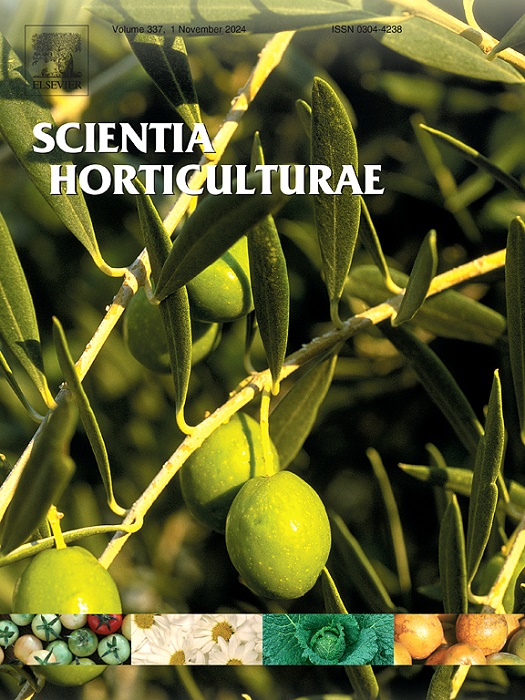CrCUL11调节激素和氧化还原信号,促进网状茶花不定芽的形成
IF 3.9
2区 农林科学
Q1 HORTICULTURE
引用次数: 0
摘要
网状茶花是一种重要的园林观赏植物,具有很高的观赏价值和经济价值,但其离体再生技术仍具有一定的挑战性。我们的研究发现,CULLIN家族基因CrCUL11与生长素信号通路相关,是网麻不定芽分化的关键调控因子。烟草的异源转化表明,CrCUL11调节内源生长素和细胞分裂素水平,激活转录因子(如WOX、YUCCA、ARR、CRE),形成激素平衡网络。这个网络可以通过外源植物生长调节剂(0.20 mg/L IBA + 1.00 mg/L 6-BA)或红蓝光调节(蓝:红光= 2:1)来实现。重要的是,CrCUL11促进抗坏血酸(AsA)和谷胱甘肽(GSH)的合成,并消除ROS以维持氧化还原稳态。本研究揭示了CrCUL11在激素-抗氧化串扰中的双重作用,为改善网麻再生系统提供了新的途径。本文章由计算机程序翻译,如有差异,请以英文原文为准。
CrCUL11 regulates hormonal and redox signaling to promote adventitious bud formation in camellia reticulata
As an essential ornamental plant for horticultural applications, Camellia reticulata has high ornamental and economic value, yet its in vitro regeneration remains technically challenging. Our research found that CrCUL11, a CULLIN family gene related to auxin signaling, is a key regulatory factor for adventitious bud differentiation in C. reticulata. The heterologous transformation of tobacco indicates that CrCUL11 regulates the levels of endogenous auxin and cytokinin, activates transcription factors (e.g., WOX, YUCCA, ARR, and CRE), and forms a hormonal balance network. This network can be achieved through exogenous plant growth regulators (0.20 mg/L IBA + 1.00 mg/L 6-BA) or through red-blue light regulation (blue: red light = 2:1). Importantly, CrCUL11 promotes the synthesis of ascorbic acid (AsA) and glutathione (GSH), and eliminates ROS to maintain redox homeostasis. This study reveals the dual role of CrCUL11 in hormone-antioxidant crosstalk, providing a new approach for improving the C. reticulata regenerative system.
求助全文
通过发布文献求助,成功后即可免费获取论文全文。
去求助
来源期刊

Scientia Horticulturae
农林科学-园艺
CiteScore
8.60
自引率
4.70%
发文量
796
审稿时长
47 days
期刊介绍:
Scientia Horticulturae is an international journal publishing research related to horticultural crops. Articles in the journal deal with open or protected production of vegetables, fruits, edible fungi and ornamentals under temperate, subtropical and tropical conditions. Papers in related areas (biochemistry, micropropagation, soil science, plant breeding, plant physiology, phytopathology, etc.) are considered, if they contain information of direct significance to horticulture. Papers on the technical aspects of horticulture (engineering, crop processing, storage, transport etc.) are accepted for publication only if they relate directly to the living product. In the case of plantation crops, those yielding a product that may be used fresh (e.g. tropical vegetables, citrus, bananas, and other fruits) will be considered, while those papers describing the processing of the product (e.g. rubber, tobacco, and quinine) will not. The scope of the journal includes all horticultural crops but does not include speciality crops such as, medicinal crops or forestry crops, such as bamboo. Basic molecular studies without any direct application in horticulture will not be considered for this journal.
 求助内容:
求助内容: 应助结果提醒方式:
应助结果提醒方式:


